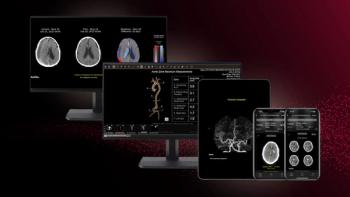
Dual-Energy CT Shows Potential for Pancreatic Cancer
Imaging by DECT may be an important tool in diagnosing and managing pancreatic cancer.
Dual-energy CT (DECT) imaging has several potential applications in the detection, staging, and follow-up of pancreatic cancer, according to a presentation at the American Roentgen Ray Society 2015 Annual Meeting (ARRS) in Toronto, Canada.
Researchers from Johns Hopkins University in Baltimore, MD, and Siemens Medical Solutions in Malvern, PA, reviewed currently available applications of postprocessed DECT with a specific interest in the pancreatic cancer assessment.
"DECT imaging is a promising technique, and it has the potential to improve lesion detection and characterization beyond levels available with single-energy CT imaging," coauthor Satomi Kawamoto, MD, associate professor of radiology and radiological science at Hopkins, said in a release.
The presenters reviewed the techniques and applications available with DECT in assessment of pancreatic cancer evaluation, such as:
• Virtual unenhanced CT to eliminate unenhanced CT (eg, differentiating between calcifications and contrast enhancement, differentiating between enhancing mural nodule and mucin deposition in intraductal papillary mucinous neoplasm)[[{"type":"media","view_mode":"media_crop","fid":"34468","attributes":{"alt":"Satomi Kawamoto, MD","class":"media-image media-image-right","id":"media_crop_2702479816077","media_crop_h":"0","media_crop_image_style":"-1","media_crop_instance":"3667","media_crop_rotate":"0","media_crop_scale_h":"0","media_crop_scale_w":"0","media_crop_w":"0","media_crop_x":"0","media_crop_y":"0","style":"height: 193px; width: 140px; border-width: 0px; border-style: solid; margin: 1px; float: right;","title":"Satomi Kawamoto, MD","typeof":"foaf:Image"}}]]
• Virtual monochromatic spectral CT (eg, increasing lesion detection of isoattenuating tumors, potentially optimizing imaging quality and enhancing vascular visibility)
• Material-specific iodine distribution and perfusion in potential assessment of cancer characterization and assessment of treatment effect
Also discussed were optimal scan protocols and radiation dose at DECT and limitations of DECT, including workflow challenges, data storage, and patient habitus.
Newsletter
Stay at the forefront of radiology with the Diagnostic Imaging newsletter, delivering the latest news, clinical insights, and imaging advancements for today’s radiologists.




























